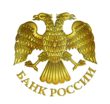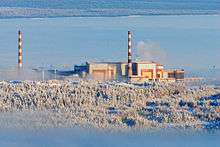Banking in Russia
| This article is part of a series on | |||
| Banking in the Russian Federation | |||
|---|---|---|---|
 | |||
| |||
|
Lending |
|||
|
|||
|
Payment & Transfer |
|||
|
Russia portal | |||
Banking in Russia is subject to significant regulations as banks in the Russian Federation have to meet mandatory Russian legislation requirements, and comply with numerous Bank of Russia instructions and regulations.
History
Soviet period
See Gosbank
Perestroika
As part of Mikhail Gorbachev's perestroika program, other banks were formed, including; "Promstroybank" (USSR Bank of Industrial Construction), "Zhilstoybank" (USSR Bank of Residential Construction), "Agrobank" (USSR Agricultural Bank), "Vneshekonombank" (USSR Internal Trade Bank), and "Sberbank" (USSR Savings Bank). "Sberbank" continues to this day as one of Russia's largest banks, retaining senior ex-Gosbank personnel and most of the present Russian government's banking business.
Russian period
The modern Russia inherited the banking system of the Soviet Union, with a few big state banks (like Sberbank, Vneshekonombank, and Vneshtorgbank). After more than 15 years of reforms in Russia, there are now 1183 financial institutions with 3286 regional branches.[1]
1998 financial crisis
2008 financial crisis
Beginning in early October 2008, several Russian banks failed due to liquidity issues related to US credit derivatives. Russian bank Globex barred customers from withdrawing money from their accounts October 15, 2008, in the first bank run of the current global economic crisis.
2010s
In June 2013 Elvira Nabiullina was appointed to the chairman of the Central Bank of Russia.[2] In an interview with television channel Channel one she said Russia’s Central Bank has no blacklists of banks subject to license revocation. She added that the Central Bank will not warn any bank about such measures. She said "As a matter of fact, no one knows who might be the next, We cannot warn anyone. Moreover, it would be wrong to do that. I know not a single country worldwide where the central banks would warn about license revocation. It is not ruled out that in case a bank is warned, a mala fide owner or managers could divert assets, making settlements with closest clients, so a rank and file depositor will finally receive much less money".[3]
And so, in December 2013 Central Bank of Russia revoked licenses of three commercial banks, Investbank, Smolensky Bank and the Bank of Project Finance and later then Ecoprombank, Masterbank, Simbirsk and many others[4] State-run Agency for deposits’ insurance paid money to clients.[5]
Credit and debit cards
At the end of 2008, there were 119 million bank cards in circulation in Russia.[6]
Sanctions
On March 2014, amidst the 2014 Crimean crisis, following the passage of a secession referendum, the declaration of independence of the Republic of Crimea from Ukraine and the process of accession to Russia that followed it, U.S. President Barack Obama announced sanctions on Rossiya Bank. International payment systems Visa Inc. and MasterCard suddenly stopped service of credit cards issued by the Rossiya Bank. Non-cash transactions of SMP Bank (owned by Rottenberg brothers) and Sobinbank (100% subsidiary of Rossiya) were also frozen.[7] Many Russian residents turned to national banks operations although they still have no doubt in reliability of foreign transnational financial institutions.[8]
Banks
Largest banks in Russia in terms of net assets (trillions of rubles) as of Dec. 1, 2013:[9]
- Sberbank (15.8)
- VTB (5.2)
- Gazprombank (3.5)
- VTB-24 (2)
- Rosselkhozbank (1.8)
- Bank of Moscow (1.8)
- Alfa Bank (1.4)
- Nomos Bank (0.8)
- Unicredit (0.8)
- Rosbank (0.7)
- Promsvyazbank (0.7)
- Raiffeisenbank (0.7)
References
- ↑ Statistics on the site of the Bank of Russia
- ↑ "Central Bank Cancels 3 More Bank Licenses". Moscow Times. Retrieved 14 December 2013.
- ↑ "Russia's Central Bank has no blacklists of banks subject to license revocation - governor". ITAR TASS. Retrieved 14 December 2013.
- ↑ "Russia's Central Bank revokes licenses of 3 commercial banks". Itar Tass. Retrieved 14 December 2013.
- ↑ "Agency for deposits' insurance starts paying clients of banks whose licenses were revoked". Itar Tass. Retrieved 14 December 2013.
- ↑ http://www.cbr.ru/eng/publ/BBS/Bbs0905e.pdf
- ↑ "Bank Rossiya Is First Russian Lender Under U.S. Sanctions". Bloomberg. 20 March 2014. Retrieved 21 March 2014.
- ↑ "TRANSNATIONAL BANKS IN CENTRAL AND EASTERN EUROPE: WHERE DO RUSSIANS WANT TO INVEST THEIR MONEY?" (PDF). Retrieved 15 May 2016.
- ↑ "State Boosts Grip on Economy With Bank Crackdown". The Moscow Times. Retrieved 25 December 2013.



